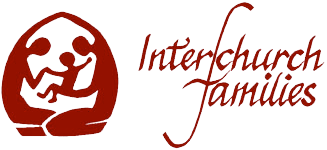Facilitator's Summary
INTERCHURCH FAMILIES CONFERENCE
NEWCASTLE 2005
In presenting the history behind the development of the document Interchurch Families and Christian Unity, Ruth Reardon demonstrated many years of commitment to a cause which reflected the pain of those involved in interchurch families. She drew a strong distinction between the faith of both partners in an interchurch marriage and mixed marriages where only one partner was committed to his/her particular faith. One of her most significant statement, to my mind, was that the process of growing together as a married couple is the same process as that which is required to bring about Christian unity. She went on to say that pastoral assistance is required to help them build, not only family life, but interchurch unity.
Father Gerard Kelly began his address with the proposition that there has bee a shift from interchurch families being seen as a problem to them being pioneers in the search for Christian unity. He pointed out that marriage is always the meeting of two different people. These differences develop in various interactions within families, schools, church, work etc. Therefore the starting point for all marriages is diversity and thus marriage by its very nature is ecumenical and this is especially so in interchurch marriage. Interchurch families are pioneers in grappling with these differences
Marriage is a covenant in that the unity between the couple becomes an image to demonstrate the unity of God and his people. A unity which is built on righteousness, justice, steadfast love, mercy and faithfulness. Marriage demonstrates that the unity given by God is achievable because the marriage covenant is the place where people learn about reconciliation.
The interchurch family is not only a sign but an instrument of Christian unity and union with God. It ecumenical basis and the pastoral care of each member by the other demonstrates that ecumenism always involves an exchange of gifts. In this case speaking and listening in way that all parties can come to see that which is possible. To listen as St Benedict exhorts, with the ear of the heart.
Bishop Rutherford proposed that there was too much thinking and not enough thanking. He acknowledged the pain caused by the yearning for unity but also rejoiced in the unity which already exists. He declared Authority to be a gift and suggested that the Church needs to unravel authority as a gift rather than a means of boxing people in.
Rev. Chris Budden suggested that without dialogue our differences continue. He believes that genuine dialogue begins with a commitment to relationship. Marriage demonstrates this commitment to relationship.
Chris asked the question what leads people to hold their separate identities and suggested that we should learn how to explore this and queried how they apply to young people.
Rev. Michael Grosas acknowledged the pain of those people who feel forced to leave the church in which they grew up because of their marriage to someone from a different faith tradition. He indicated that young people appeared to be more flexible in relation to church boundaries. He also raised the question of how the pastoral needs of divorced people are met when it results in the loss of their identity and culture.
Bishop Michael Malone saw the interchurch family as an instrument for change. He posited that the ecumenical debate had been governed by the Church. He saw that the documents outlining the norms for sacramental sharing as being valuable and having the potential together with interchurch families in pushing the envelope a bit further.
The common theme from all the couples who presented was one of pain, the pain of exclusion. There was an acknowledgement that some progress had been made in those dioceses where guidelines had been developed but there was concern that they were not widely known or used. The overwhelming complaint was that most pain occurred because of the attitude and role of the priest when they were attempting to be inclusive in their liturgical celebrations, though one couple reported their experience as being very positive and a great opportunity for the priest to educate the laity in relation to sacramental hospitality.
Rev. Chris Budden urged the families to create space to share as much as our churches will allow us to do. To recognize what is common between the churches rather than the differences. For healing to take place tolerance, understanding and forgiveness is necessary. At every level both parties in a dialogue must hold to the basis of Christianity: the work and life of Christ; Resurrection, Ascension, and eternal life through faith.
Father Gerard Kelly reminded us that sometimes it is not possible to solve things theologically. Sometimes it is better to remain silent rather than make a statement about issues which have not been thoroughly researched and reflected upon. Sometimes it is best to be still and know the God who is.
The challenge is to continue to live on the edge of what is possible and to push the envelope at every opportunity.
Vivienne Llewellyn
August 2005

